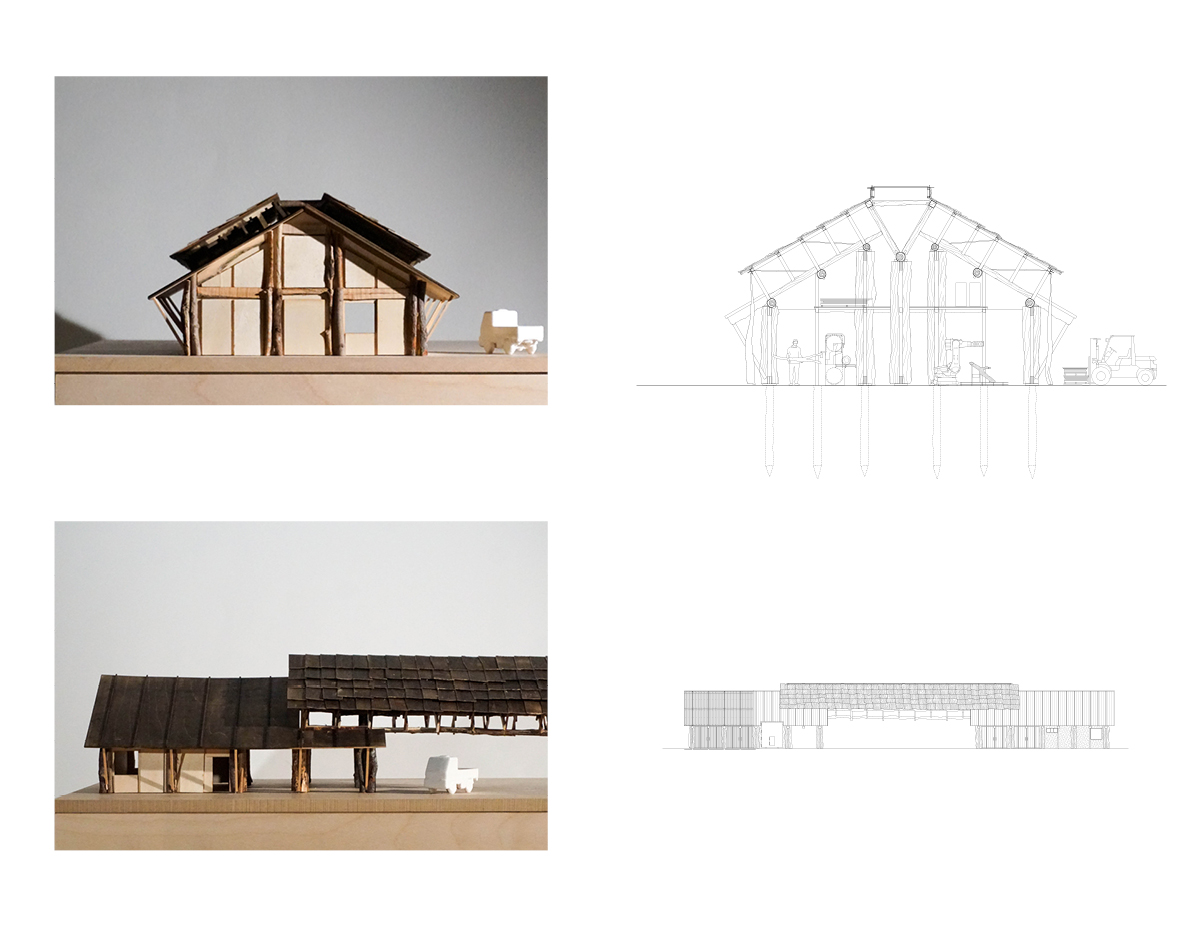Kei Takanami (MArch I ’25)
Form Follows Forest explores architecture’s potential to re-engage with the timber industry—from upstream extraction and processing to assembly and construction. Rather than treating wood as a passive commodity, the thesis investigates ways of integrating small-diameter, irregular, and underutilized timber into building systems—aligning architectural assemblies with the conditions of the living forest.
Japan’s forests were once diverse in conifers and broadleaf species, managed through ecological rhythms and small-scale labor. Yet, these landscapes have since been reshaped by postwar industrialization, shifting energy demands, and the globalization of timber markets. Today, monoculture planted forests of aging cedar and cypress dominate the landscape, leaving forests underutilized and ecologically fragile. Meanwhile, contemporary architecture has grown increasingly disconnected from its material origins, favoring standardized construction that disregards the irregularity and potential of local wood.
The thesis adopts a design method based on larger tolerance and clearance zones assigning maximum zones of interference and parameter ranges to irregular members. Enclosures and auxiliary elements work around these zones, using techniques of infill and scaffold, while clearing structural walls from interference proximities.
Two speculative buildings, in Hanno and Shinkiba, demonstrate this approach at different points in the timber material flow. By reengaging thinned, knotted, and twisted wood, the project challenges conventional notions of material efficiency, standardization, and tolerance. Together, these proposals demonstrate how architecture can respond to the evolving conditions of the forest, linking material source and built form.
